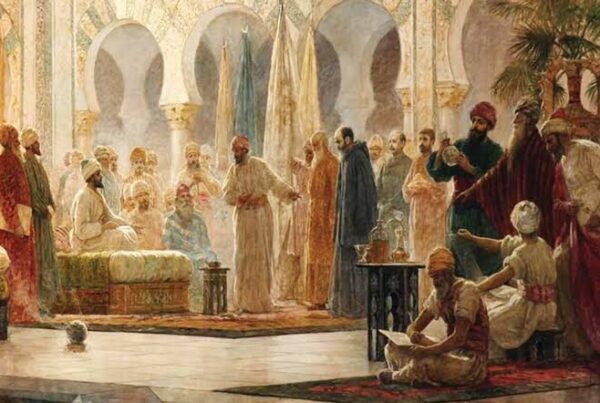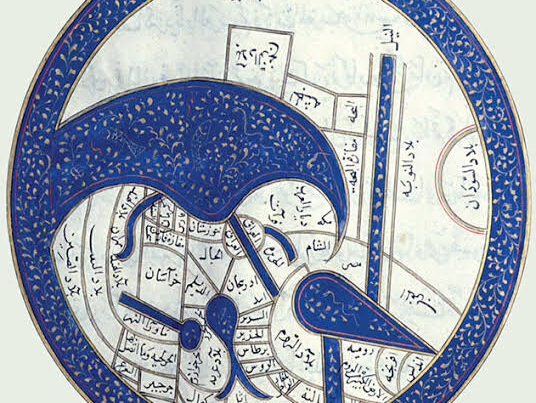By Huzaifa Laghari
Arab conquest of Sindh is, if not the most then one of the most controversial topics in the history of South Asia. The way most people look upon the subject is heavily affected by their personal views and because of this they fail to uncover many lesser known parts in this topic. I have tried to put an effort in conducting neutral research on this topic due to which I’ve come across the following findings.
Brief Introduction on Arab conquest of Sindh
In the 7th century South Asia had no central power which would rule all of India, instead it was divided in small dynasties which ruled different parts of it such as Durlabhavardhana, the Hindu dynasty in Kashmir, the dynasty of Gopala in Bengal and so on. The most important in our focus was the Brahmin dynasty of Sindh which was ruled by Raja (king) Dahir who had to face the Arabs. It is important to note that the Arabs did not suddenly come to invade Sindh but had for long been sending expeditions as part of their expansionist policy. It was 712 A.D, an expedition was sent by Umayyads under the leadership of Mohammad Bin Qasim to conquer Sindh. The first town they captured belonging to brahmin dynasty was Debal. Then from Debal Marching through Nerun, Sehwan and other areas they finally entered Aror, The capital of sindh. The Brahmin dynasty had fallen marking a start to the Muslim rule in Sindh.
Was the Arab conquest justifiable?
Many stories exist behind the rationale of the actions taken by the Arabs. Obviously, one of the reasons would be the trend of the empires at that time of expanding their rule but some other reasons also deserve mention. It is stated that the Arabs were provoked to undertake the conquest of Sindh, various reasons have been given for that. One view is that king of Ceylon was sending to Hajaj, at that time viceroy of eastern provinces to Khalifa, Orphan daughters of Muslim merchants who had died in his dominions and his vessels were attacked and plundered by pirates of the coast of Sindh.
According to another account, the king of Ceylon had himself embraced Islam was sending troops and valuable presents to the Khalifa and those were plundered off the coast of Sindh. In response the Khalifa demanded reparation from Dahir but he refused to do so stating that the pirates responsible for plunder were not under his control and consequently he was not responsible for the payment of compensation (Pg#22, The History of India and Pakistan). Avenging the death of Muslim merchants and safety of the sea route was one of justifications presented for conquest of sindh.
It is also true that a part of the reason behind the fall of the kingdom goes to Dahir himself who, despite ruling Sindh for such a long period of time, did not manage to form an alliance with other local dynasties in South Asia to repulse the Arabs. His weakness was also later revealed when many parts of his kingdom gave weak resistance to Umayyad forces. When Mohammad Bin Qasim entered Nerun the Buddhists surrendered without a fight and argued thus ” We are a priestly class: Our religion is Peace” (pg#23, History of India and Pakistan, Vol.1). Such weaknesses made Dahir vulnerable for an attack.
Was the conquest barbaric?
It is indeed true that many ancient wars including events occuring during the Arab conquest of Sindh can be described as inhumane according to today’s norms. While the conquest itself had reasons for it, It was the rule of Umayyads after the end of conquest which was controversial. Jizya was implemented throughout the region. Soldiers who participated in the conquest were given Jagirs. A large number of lands were also given to Muslim saints and scholars. According to Chachnama around 6000 fighters of Dahir (Some say 16,000) were beheaded. (Pg#115 The Chachnamah Translation by Mirza Kalichbeg Fredunbeg)
Conclusion:
In conclusion I will write that while the Muslims today defend the Arabs and those with secular approach see Dahir as hero, we should not let this piece of history create bridges between us. I remember the Sindh’s renowned scholar Dr N.A Baloch saying that the British still consider their Roman colonization period as their part of history, they own it and take pride in it, they say come and look this roman wall with smile on their faces. We Pakistanis should own this piece of history whether the Dahir’s period or Umayyad rule as our own. It is also truly inspirational to reflect upon some scenes of respect both the parties gave to each other despite being enemies. It is reported in Chachnamah that Mohmmad bin Qasim gave a dress of honor to the Samani the ruler of Nerun , showed many Favours to him, treated him very kindly and sent him back instead of taking him as a prisoner of war. In return Samani helped Mohammad bin Qasim when asked by Mohmmad bin Qasim for help to utilize his services while crossing the river of Sindh (Pg#70 The Chachnama translation by Mirza Kalichbeg Fredunbeg)
Sources: Chachnamah translation by Mirza Kalichbeg Fredunbeg, History of India and Pakistan by Maj R Prof.Muhammad Tariq Awan.




